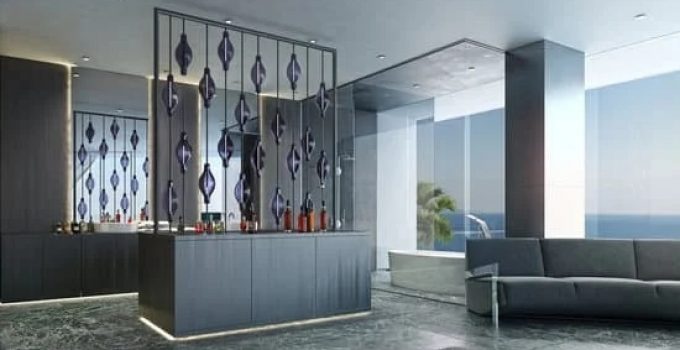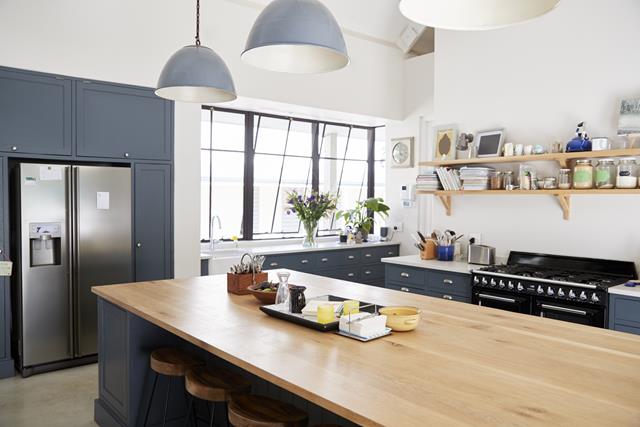Customizing your iPhone home screen allows you to transform a mundane interface into a personalized expression of style and functionality. With the introduction of iOS 14, Apple has provided users with more freedom than ever before to decorate their iPhone home screens. From selecting visually appealing wallpapers to organizing apps strategically, there are endless possibilities for creating a unique and aesthetic experience every time you unlock your phone.
Understanding the importance of customizing your iPhone home screen is the first step towards creating a digital space that truly reflects your personality and enhances your user experience. The home screen is the gateway to all the functionalities and apps on your iPhone, making it a central hub that you interact with daily. By personalizing it, you can streamline navigation, boost productivity, and create an environment that resonates with your style.
In this article, we will explore various elements and features of the iPhone home screen, offering tips and tricks for transforming it into an eye-catching display filled with organization and convenience. We will delve into strategies for choosing the perfect wallpaper that sets the tone for your screen, as well as techniques for arranging and decluttering apps effectively.
Additionally, we will guide you through customizing app icons, creating personalized app folders, utilizing widgets, customizing the dock section, adding decorative elements, finding inspiration, troubleshooting common issues, and restoring your home screen if desired.
Unleash your creativity and embark on a journey to customize your own iPhone home screen masterpiece. Let’s dive in.
Understanding iPhone home screen
The iPhone home screen serves as the gateway to all your apps and functions, allowing you to access everything your phone has to offer with just a few taps. Understanding the different elements and features of the iPhone home screen is essential in customizing it to suit your preferences and needs.
One important element of the iPhone home screen is the app icons. These icons represent each app installed on your device, making it easy for you to locate and launch them. By default, app icons are arranged in a grid pattern on multiple pages, but you have the flexibility to organize them in a way that makes sense to you.
Another key feature of the iPhone home screen is the dock. The dock is located at the bottom of the screen and can hold up to four apps that are accessible from any page of your home screen. This allows for quick access to your most frequently used apps without having to navigate through multiple pages.
Furthermore, widgets provide an interactive and dynamic experience on your iPhone home screen. Widgets allow you to view information or perform actions directly from the home screen without opening individual apps. From weather updates and calendar events to music controls and fitness tracking, widgets can be customized and placed anywhere on your home screen.
Understanding these elements and features of the iPhone home screen forms the foundation for creating a personalized and organized layout. Whether you prefer minimalism or vibrant aesthetics, customizing your iPhone’s home screen is a creative endeavor that allows you to express yourself while improving usability.
| Elements | Features |
|---|---|
| App Icons | Represent installed apps |
| Dock | Holds up to four frequently used apps |
| Widgets | Display information or perform actions on the home screen |
Choosing the perfect wallpaper
Choosing the perfect wallpaper is a crucial step in decorating your iPhone home screen. The wallpaper sets the tone and overall aesthetic of your home screen, so it’s important to select one that reflects your personal style and enhances the visual appeal of your device.
When choosing a wallpaper, you want to opt for an image that is visually appealing and complements your app icons without overpowering them. Consider the color scheme, patterns, and level of detail in the image. A cluttered or busy wallpaper may make it difficult to locate your app icons, so it’s best to choose something with a clean and minimalistic design.
If you’re unsure of what type of wallpaper to choose, consider themes that resonate with you. For example, nature-inspired wallpapers can bring a sense of calmness and tranquility to your home screen, while abstract designs can add a modern and artistic touch. Experiment with different styles to find what suits your taste and personality.
Additionally, take into account the sizing and resolution of the wallpaper. iPhone screens come in various sizes, so make sure the chosen wallpaper is compatible with your device’s dimensions. Low-resolution or pixelated images can look less appealing on high-resolution Retina displays, so opt for high-quality wallpapers that will showcase vibrant colors and sharp details.
Ultimately, choosing the perfect wallpaper for your iPhone home screen is based on personal preference. Take the time to explore different options, experiment with various designs, and have fun customizing your device’s appearance to make it truly unique to you.
Organizing your apps
One of the key aspects of customizing your iPhone home screen is organizing your apps in a way that not only declutters your screen but also makes navigation easier and enhances productivity. With a multitude of apps available, it’s common to have a cluttered home screen that can be overwhelming to navigate. However, by strategically arranging your apps, you can create a more organized and efficient experience.
Categorize and Sort Your Apps
The first step in organizing your apps is to categorize them based on their purpose or usage. Identify different categories such as Social Media, Productivity, Entertainment, News, etc., and group your apps accordingly. This helps in creating a logical structure and enables you to find the desired app quickly.
Once you have categorized your apps, sort them within each category based on frequency of use or importance. Place the most frequently used or essential apps within easy reach, such as on the first page or at the bottom dock for quick access. Rearrange other less frequently used apps accordingly.
Create App Folders
App folders are an excellent way to further declutter your home screen and organize similar apps together. To create an app folder on iPhone, simply drag one app icon onto another app icon. This will automatically create a folder with both apps inside.
Be mindful while naming your folders – use clear and specific names that represent the content within each folder. For example, instead of naming a folder “Miscellaneous,” name it “Utilities” or “Tools” for better clarity.
Continuously evaluate and update your app folders as you download new apps or find yourself using certain apps more often than others. This ensures that your organization remains efficient and tailored to your usage habits.
Utilize Smart Stacks
Smart Stacks is a feature introduced in iOS 14 that allows multiple widgets to occupy the same space on the home screen while automatically rotating through them based on relevance or time of day. This intelligent feature saves screen real estate while also displaying useful information or quick access to frequently used apps.
To utilize Smart Stacks, long-press on the home screen and tap the “+” button in the top-left corner to add a widget. From there, select the desired widget size and scroll down to choose “Smart Stack” from the widget options. You can then customize the stack’s content and behavior according to your preferences.
By incorporating Smart Stacks into your home screen, you can further organize your apps and widgets without taking up excessive space. This feature adds an element of dynamism to your home screen, ensuring relevant information is readily available as you navigate throughout your day.
Organizing your apps effectively not only improves the appearance of your iPhone home screen but also enhances its functionality and usability. By following these strategies for decluttering and arranging your apps, you can create a more organized and efficient home screen that aligns with your usage habits and priorities.
Customizing app icons
Customizing app icons is a popular way to personalize your iPhone home screen and make it truly unique. Changing the appearance of app icons allows you to add a personal touch and create a cohesive visual theme for your device. In this section, we will provide a step-by-step guide to changing app icons, including tips on utilizing third-party apps or creating your custom designs.
One option for customizing app icons is by using third-party apps specifically designed for this purpose. These apps provide a straightforward way to change the look of your app icons without the need for any technical knowledge or design skills. Simply download one of these apps from the App Store, follow the instructions, and you can easily apply new icon designs to your preferred apps.
Another option is to create your custom app icons using image editing tools or graphic design software. This method allows for complete control over the design and appearance of your app icons, giving you endless possibilities for customization.
Start by choosing an image or design that you want to use as an icon, ensuring it has a suitable size and resolution. Then, use an image editing tool like Adobe Photoshop or online platforms like Canva to create an icon that matches your desired aesthetic.
No matter which method you choose, it’s essential to consider the visual consistency and coherence of your home screen. Ensure that all the customized app icons have a similar style or theme so that they don’t clash with each other or disrupt the overall look of your home screen. Additionally, remember that customizing app icons does not change the functionality of the apps themselves; it only changes their appearance on the home screen.
| Step | Description |
|---|---|
| 1 | Select a third-party app or design tool |
| 2 | Choose new icons or design your custom icons |
| 3 | Follow the instructions of the app or software to apply the new icons |
| 4 | Ensure visual consistency and coherence in your icon designs |
Customizing app icons is a fun and creative way to make your iPhone home screen reflect your personal style. Whether you choose to use third-party apps or create your custom designs, these step-by-step instructions will help you transform the appearance of your app icons and achieve a visually stunning home screen.
Creating personalized app folders
Creating personalized app folders is a great way to organize and streamline your iPhone home screen. By grouping similar apps together, you can easily locate and access them without having to scroll through multiple pages or search for specific icons. In this section, we will explore the step-by-step process of creating and organizing app folders on your iPhone.
To create a folder, simply follow these steps:
- Long-press on an app icon until it starts jiggling.
- Drag one app icon onto another app icon that you want to group together.
- A folder will automatically be created with both apps inside.
- Tap on the folder to open it and view the apps within.
Once you have created a folder, you can customize its name by tapping on the text field above the app icons. This allows you to label the folder based on its contents, making it easier to find specific apps.
To add more apps to a folder, repeat the same process of dragging and dropping an app onto an existing folder. You can continue adding apps until the folder is full, which typically holds up to 12 apps depending on your iPhone model.
Organizing your app folders is also important for efficiency. Consider arranging your folders based on categories such as Productivity, Entertainment, Social Media, or Games. This way, you can quickly navigate through your apps by simply opening the relevant folder.
| Folder Name | Apps |
|---|---|
| Productivity | Notes, Calendar, Reminders |
| Social Media | Facebook Twitter Instagram |
| Entertainment | Netflix, Spotify, YouTube |
| Games | Candy Crush, Sudoku, Among Us |
By creating personalized app folders and organizing them based on your preferences, you can have a more organized and efficient iPhone home screen that reflects your usage habits and enhances your overall user experience.
Utilizing widgets
Utilizing widgets on your iPhone home screen is a great way to display useful information or perform actions directly from your device’s main interface. Widgets are like mini-applications that provide quick access to specific features without the need to open the actual app. They can help streamline your daily tasks and enhance productivity. In this section, we will explore how you can make the most out of widgets and customize them according to your preferences.
To add a widget to your iPhone home screen, follow these simple steps:
- Press and hold an empty space on your home screen until the apps start jiggling.
- Tap the “+” button located in the top left corner of the screen.
- Scroll through the widget options or use the search bar to find a specific widget.
- Select a widget that suits your needs and tap “Add Widget.”
Once you’ve added a widget, you can customize its size and placement on the home screen by dragging it around or resizing it using pinch gestures. Additionally, you can stack multiple widgets on top of each other within a smart stack for easy access to different information throughout the day.
There are various types of widgets available, including weather, calendar, news, reminders, fitness tracking, music controls, and more. You can choose which specific apps’ widgets you want to display based on your preferences and needs.
Widgets on iOS also support customization by giving you options such as changing their appearance or content displayed. For example, some weather widgets allow you to choose between different themes or locations for weather updates. Experiment with different widgets and explore their settings to find what works best for you.
Widgets provide convenient access to important information at a glance and reduce the need for constantly opening individual apps. By utilizing widgets effectively on your iPhone home screen, you can personalize it according to your workflow and improve overall efficiency.
Customizing the dock
The dock on your iPhone home screen serves as a prime location for your most frequently used apps, allowing you to easily access them with just a swipe. Customizing the dock not only adds a personal touch to your iPhone’s appearance but also enhances its functionality. Here are some tips to help you personalize and optimize your dock:
- Choose your essential apps: The first step in customizing your dock is selecting the apps that you want to have quick access to. Consider which apps you use most frequently or find necessary for everyday tasks, such as Messages, Phone, Mail, or Safari. Ensure these essential apps are easily accessible by placing them in the dock.
- Rearrange icons: Once you’ve decided on your essential apps, you can rearrange their positions within the dock by tapping and holding an app icon until it starts wiggling. Then, drag and drop the app icons into their desired order within the dock area. You can have up to four app icons in the dock area at once.
- Utilize folders: If you find that four app icons aren’t enough to accommodate all your frequently used apps, consider creating folders within the dock. To create a folder, drag one app icon on top of another app icon within the dock until it creates a folder automatically. You can then add additional apps to this folder by dragging and dropping them onto the folder.
Remember that personalization is key when it comes to customizing your iPhone’s home screen. Feel free to experiment with different combinations of essential apps and layout arrangements until you find what works best for you.
By customizing your iPhone’s dock, you can streamline access to your most-used applications and improve overall efficiency while navigating through your device’s interface. Take advantage of this feature to save time and enhance your user experience.
Adding decorative elements
Adding decorative elements to your iPhone home screen allows you to personalize it and give it a unique touch. There are various creative ways to do this, including adding custom widgets, choosing aesthetic wallpapers, and arranging your apps in unique and visually pleasing ways.
To add custom widgets, you can take advantage of the widget feature introduced in iOS 14. Widgets allow you to display useful information or provide quick access to certain app functions directly from your home screen. You can customize the size, position, and content of the widgets to suit your preferences. Consider adding widgets for weather updates, calendar events, or even fitness tracking to enhance the functionality and visual appeal of your home screen.
Choosing aesthetic wallpapers is another great way to add personality to your iPhone home screen. You can select from thousands of high-quality wallpapers available on various websites or use your own images. Consider opting for wallpapers that match your style or interests, whether it’s minimalist designs, nature scenery, or abstract art. A well-chosen wallpaper can set the tone for your entire home screen and create a visually cohesive look.
In addition to widgets and wallpapers, you can get creative with app placements on your home screen. Instead of simply arranging them in standard rows or columns, try experimenting with different layouts and patterns.
For example, you could arrange apps in the shape of a heart or a star, create color-coded sections for different categories of apps, or arrange them asymmetrically for a more artistic look. Play around with different arrangements until you find one that suits your style and preferences.
By exploring these creative ways to add decorative elements to your iPhone home screen, you can truly make it reflect your personality and taste. Whether it’s adding custom widgets for added functionality, choosing aesthetic wallpapers for a visually pleasing backdrop, or arranging apps in unique patterns, there are endless possibilities for personalization. Unleash your creativity and have fun designing an iPhone home screen that is both functional and visually stunning.
Tips for inspiration
When it comes to decorating your iPhone home screen, finding inspiration is key to creating a visually stunning and functional design. With countless design trends and sources of inspiration available, you can easily discover ideas that resonate with your personal style. Here are some tips for finding inspiration and staying up-to-date with popular design trends:
Explore Social Media
Social media platforms like Instagram, Pinterest, and TikTok are treasure troves of iPhone home screen designs. By following hashtags such as #iPhoneHomescreen or #iOS14HomeScreen, you can find a wide range of creative ideas shared by users worldwide. Take the time to browse through different profiles, screenshots, or videos to see what catches your eye.
Join Online Communities
Engaging in online communities dedicated to iPhone customization is a great way to connect with like-minded individuals and get inspired. Platforms such as Reddit have dedicated communities where users share their own home screen setups or discuss the latest trends in iPhone customization. Participating in these communities provides an opportunity to gather feedback, exchange ideas, and discover new techniques.
Follow YouTube Tutorials
YouTube is another fantastic resource for gathering inspiration for your iPhone home screen. Many content creators upload tutorials on how to achieve specific designs or showcase their own setups. Watching these videos not only helps you gain insights into various customization techniques but also sparks your creativity by seeing unique combinations of wallpapers, widgets, app icons, and layouts.
Stay Updated with Design Blogs
Design blogs focused on Apple products often feature articles showcasing the latest trends in iPhone home screen customization. They provide detailed explanations of how specific designs were achieved and offer tips on integrating different elements effectively. Subscribing to these blogs or regularly visiting their websites ensures you stay informed about new design concepts while broadening your knowledge about the aesthetic principles behind them.
By taking advantage of these tips and exploring popular design trends or sources of inspiration, you can infuse your iPhone home screen with a fresh and unique look. Remember that the goal is not to replicate other designs but to use them as a foundation for creating something that reflects your individual style and preferences. So dive into the world of iPhone customization, experiment with different ideas, and let your creativity soar.
Troubleshooting and restoring
Common issues when customizing your iPhone home screen
Customizing your iPhone home screen can sometimes lead to unexpected issues or problems. Here are some common issues that users may encounter when customizing their home screens and possible solutions:
- App icon compatibility: Certain third-party apps or methods used to customize app icons may not be fully compatible with all versions of iOS. This can result in icons not appearing properly, appearing as blank squares, or causing the app to crash. To resolve this issue, make sure you’re using a reliable and up-to-date method for customizing app icons and consider checking for any available updates.
- Unresponsive widgets: Widgets can be a great addition to your home screen, but sometimes they may stop responding or fail to update properly. If you’re experiencing issues with a particular widget, try removing it from your home screen and then re-adding it. You can also check if there are any updates available for the widget in question.
- Performance slowdowns: Adding too many customizations to your home screen, such as complex wallpapers or multiple widgets, can sometimes cause performance slowdowns on older iPhones or devices with limited RAM. If you notice that your device is lagging or experiencing slower response times after customizing your home screen, try simplifying it by reducing the number of widgets and using lighter wallpaper options.
Restoring your iPhone home screen
If at any point you decide to revert back to the original settings of your iPhone home screen, here’s how you can restore it:
- Go to the Settings app on your iPhone.
- Scroll down and tap on “General.”
- Tap on “Reset.”
- Select “Reset Home Screen Layout.”
Please note that resetting the home screen layout will remove all app arrangements, folder structures, and customization changes made to the home screen design. However, it will not delete any apps or data on your iPhone.
It’s a good idea to take screenshots or photos of your customized home screen before resetting it, so you can easily recreate your previous layout if desired. Remember that you can always customize your home screen again at any time, so don’t hesitate to experiment and try new designs.
By understanding common issues and knowing how to restore your home screen, you can confidently explore different customizations without worrying about getting stuck or losing important settings.
Conclusion
In conclusion, customizing your iPhone home screen is an excellent way to personalize and enhance your overall user experience. Throughout this article, we have explored various aspects of decorating your iPhone home screen, from selecting the perfect wallpaper to organizing apps, customizing icons, creating personalized app folders, utilizing widgets, and adding decorative elements. By following these tips and tricks, you can transform your iPhone home screen into a visually stunning and functional masterpiece.
One key takeaway from this article is the importance of unleashing your creativity. Your iPhone home screen is essentially a blank canvas waiting to be filled with your unique style and personality. Whether you prefer minimalistic designs or vibrant aesthetics, there are endless possibilities for you to unleash your creative vision and make your iPhone truly reflect who you are.
Remember that customization doesn’t need to stop at the visuals. You can also use widgets and app placements strategically to improve productivity and access information more efficiently. Moreover, don’t be afraid to explore popular design trends or seek inspiration from others’ creations to spark new ideas for your own home screen design.
So go ahead and dive into the world of decorating your iPhone home screen. Take the time to experiment with different wallpapers, icon styles, app arrangements, and decorative elements until you achieve a layout that not only looks visually pleasing but also enhances how you use your device on a daily basis. The possibilities are limitless, so let your creativity run wild.
Frequently Asked Questions
How do I customize my iPhone Home Screen?
To customize your iPhone Home Screen, you can start by rearranging and organizing the apps. Simply long-press on any app icon until they all start wiggling. Then, you can drag and drop the icons to reposition them or create folders by dragging one app onto another.
Additionally, you can personalize your Home Screen by changing the wallpaper. Go to Settings, select Wallpaper, then choose either a built-in option or use your own photo. Furthermore, consider utilizing the App Library feature introduced in iOS 14 to remove clutter from your Home Screen and easily access apps by swiping right.
How do I customize my iPhone Home Screen widgets?
Customizing iPhone Home Screen widgets is relatively straightforward in iOS 14 and newer versions. Firstly, long-press on an empty space on your Home Screen until the apps start wiggling. Tap the “+” button in the top left corner to access the widget gallery.
From there, select a widget size and swipe left or right to browse through available options. Once you find the desired widget, tap on it to preview different sizes or styles if applicable. Lastly, tap “Add Widget” to place it on your Home Screen; you can then drag it around for proper placement.
How do I organize my iPhone Home Screen aesthetic?
Organizing your iPhone Home Screen aesthetic involves arranging icons, selecting suitable wallpapers, and creating a cohesive look. One popular method is creating custom app icons using shortcuts with various images that match your desired aesthetic — these shortcuts will open corresponding apps when tapped. To achieve visual harmony, consider removing unnecessary apps from the main screens and placing them within folders or utilizing App Library for ease of access instead.
Experiment with different wallpapers that complement your chosen theme—whether minimalist, vibrant, or nature-inspired—to provide a consistent background for your icons and widgets. Remember to align items neatly and avoid overcrowding to maintain an organized and visually pleasing overall layout on your iPhone Home Screen aesthetic.

Hello, lovely readers! I’m Sheila Collins, and I’m delighted to be your trusted guide on this exciting journey of home improvement, design, and lifestyle. As the founder and editor-in-chief of Home Guide Blog, I’m passionate about all things related to homes, and I’m here to share my knowledge, experiences, and insights with you.





